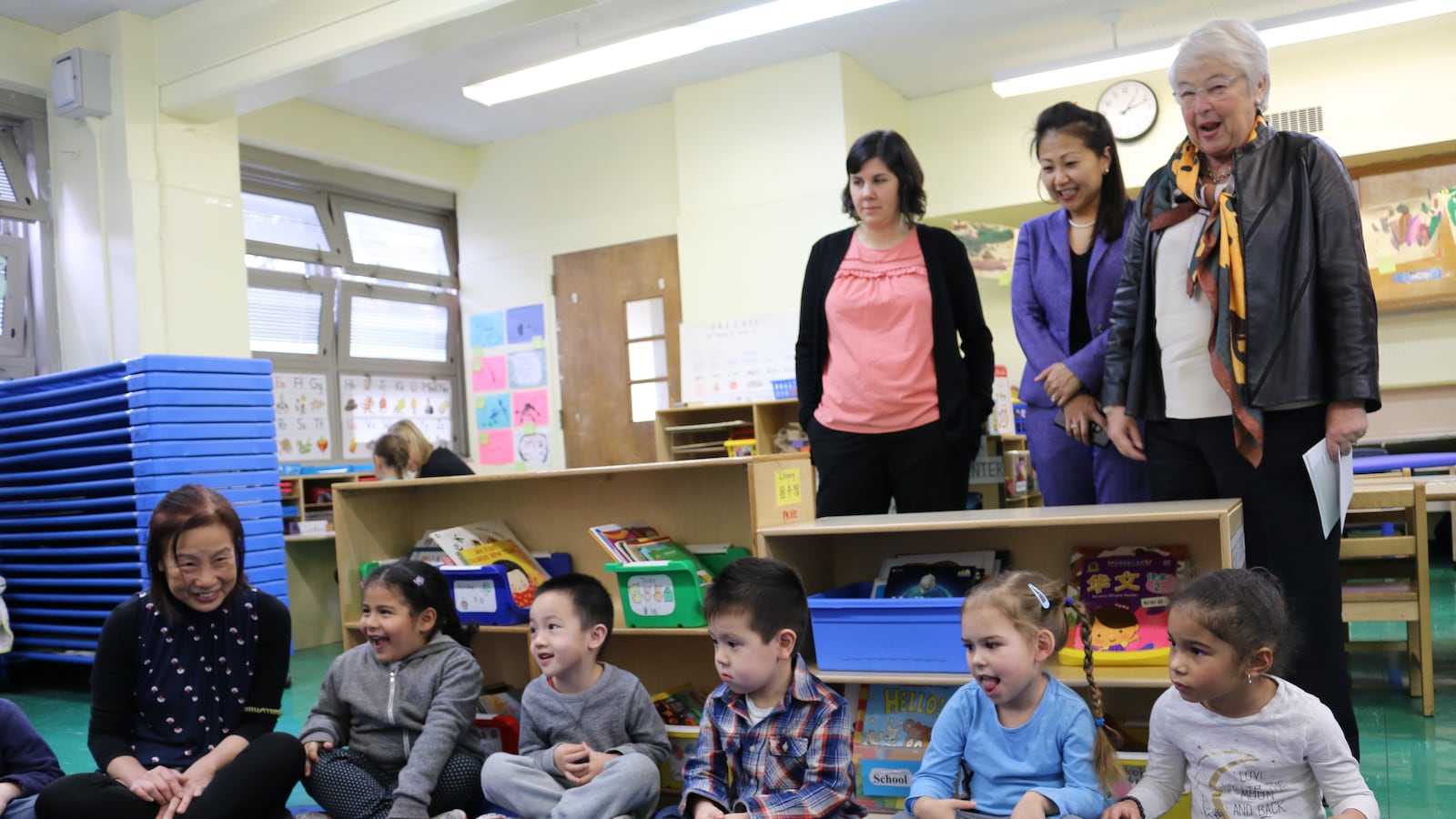Education Department officials on Wednesday announced the addition of 33 dual language pre-K programs in the 2018-19 school year, more than doubling the bilingual opportunities available for New York City’s youngest learners.
The expansion continues an aggressive push under the current administration, which has added 150 new bilingual programs to date. Popular with parents — there were 2,900 applications for about 600 pre-K dual language seats last year — the programs can also be effective in boosting the performance of students who are learning English as a new language.
Another possible benefit: creating more diverse pre-K classrooms, which research has shown are starkly segregated in New York City.
Schools Chancellor Carmen Fariña said the new programs reflect the city’s commitment to serving all students, even as a national debate rages over immigration reform.
“It’s important to understand that immigrants or people who speak a second language are an asset,” Fariña said. She called bilingual education “a gift that I think all schools should have.”
Included in the expansion are the city’s first dual language pre-K programs in Bengali and Russian, which will open in Jamaica, Queens, and the Upper West Side, Manhattan, respectively. The other additions will build on programs in Spanish, Mandarin and Italian. Every borough is represented in the expansion, with 11 new programs in Manhattan, nine in Brooklyn, six in Queens, five in the Bronx, and two on Staten Island.
In the dual-language model, students split their time between instruction in English and another language. At P.S. 20 Anna Silver, where the recent expansion was announced, pre-K students start the morning in English and transition to Mandarin after nap time. Experts say the model works best when the class includes an equal mix of students who are proficient in each language so they can learn from each other as well as the teacher, though it can often be difficult to strike that balance.
Officials and some advocates view dual-language programs as a tool for integration by drawing middle-class families eager to have their children speak two languages into neighborhood schools that they otherwise may not have considered. Research has shown that New York City’s pre-K classrooms tend to be more segregated than kindergarten. In one in six pre-K classrooms, more than 90 percent of students are from a single racial or ethnic background. That’s compared with one in eight kindergarten classrooms, according to a 2016 report by The Century Foundation.
Sharon Stapel, a mother from Brooklyn, said she knew early on that she wanted her daughter to learn another language and strike relationships across cultures. So she travels to the Lower East Side with her four-year-old, Finch, to attend the Mandarin dual-language pre-K program at P.S. 20 Anna Silver. On Wednesday, the city announced it will add a Spanish dual language program at the school.
“We really see it as how you build community with your neighbors and your friends,” Stapel said. “It was also an opportunity for Finch to become involved and engage in the cultures and in the differences that she could see in the classrooms — and really celebrate that difference.”
Citywide, about 13 percent of students are learning English as a new language. That number does not include pre-K since the state does not have a way to identify students’ language status before kindergarten. However, based on census data, it is estimated that 30 percent of three- and four-year-olds in New York are English learners.
Dual-language programs can benefit students who are still learning English — more so than English-only instruction. Nationally and in New York City, students who are learning English are less likely to pass standardized tests and graduate from high school. In one study, students who enrolled in dual-language courses in kindergarten gained the equivalent of one year of reading instruction by eighth grade, compared with their peers who received English-only instruction.
The city has been under pressure to improve outcomes for English learners. Under the previous administration, New York City was placed on a state “corrective action plan” that required the education department to open 125 new bilingual programs by 2013. Though the city fell short of that goal, the current administration has agreed to place every English learner in a bilingual program by the 2018-19 school year.
Among the greatest barriers to achieving that is finding qualified teachers, Fariña said. In some cases, it can be hard to find teachers who are fluent in the target language. In others, teachers who are native in a foreign language may only be certified in their home country, and it can be hard to transfer that certification to New York.
In order to open an Urdu program recently, Fariña said, the teacher, who holds a degree from another country, went through Teaching Fellows, an alternative certification program that usually caters to career-changers or recent college grads.
“I think the biggest challenge we have right now is ensuring our teacher preparation courses are keeping up with our need and demand for teachers who can teach another language,” she said.

